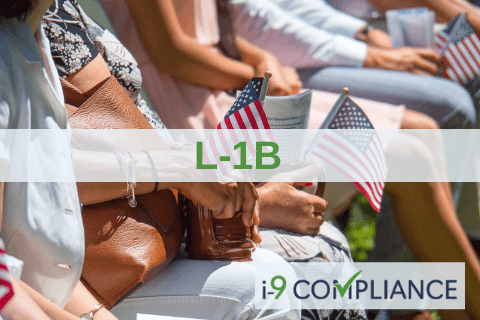L-1B Denial Rate Remains High Under Current USCIS Policies

United States Citizenship and Immigration Services (USCIS) has continued to report high rates of L-1B visa rejection even under the new administration, continuing the trend which has now continued under three distinct administrations. Currently, denial rates are reportedly at 28.2%, which is a very high rate, particularly in comparison to H-1B visas which are at a record low denial rate of 4% for initial employment and 2% for continuing. This results in considerable difficulty for employers seeking to transfer their overseas staff with specialized knowledge who are already struggling with labor shortages.
Despite the high rates that have continued, the rate of denials has dropped in FY2021 by a slight margin. These changes occurred primarily during the latter half of the fiscal year, which coincides with the USCIS’s restoration of its policy for deferring to prior determinations whenever adjudicating requests for extension involving the same parties and facts.
Though this is a positive development, it means that, unfortunately, the reduced rate of denial likely does not represent a change in the USCIS’s adjudication of L-1B petitions. This immensely high rate of denials has resulted in considerable speculation as to why the rate has remained so high despite employers’ effort in filing these petitions for employees they believe qualify.
Experts believe that this likely is due to the high standards the USCIS place on documentation proving that employees genuinely have specialized knowledge relative to other workers. Though this is an attainable standard, it requires considerable documentary evidence rather than an employer’s own assessment.
In response to the continuing high level of complaints, USCIS has responded by stating that each petition is reviewed on a case by case basis in order to determine if they meet all applicable standards. They also stated that adjudicators may request additional evidence when insufficient evidence has been submitted to prove eligibility.
These requests for evidence have themselves proven to be an issue for employers. Often, responding to requests for evidence can be time-consuming and expensive for employers, and they are more likely than not to occur in most cases. For example, in FY2021, requests for evidence were issued in 52% of L-1A and L-1B cases, with a lower rate toward the end of the year than the start.
Though the rates of denial and requests for evidence continue to be high, they appear to be slowly declining. This is a positive trend that employers will undoubtedly be looking to continue.
When it comes to your employees, automation makes eligibility verification quick and simple. Ensure compliance today with I-9 Compliance.